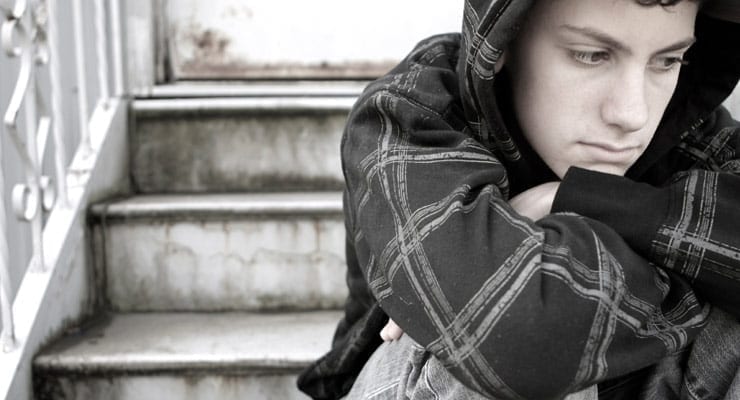When screenwriter Graham Moore accepted an Oscar for The Imitation Game in Hollywood on February 22, he made a touching plea to teenagers not to commit suicide.
“I would like for this moment to be for that kid out there who feels like she’s weird or she’s different or she doesn’t fit in anywhere,” Moore said during his valuable minutes on stage. “Yes, you do. I promise you do.”
Good thing Graham Moore had the guts to speak out. A child who kills him or herself is one of the most terrifying topics a parent can contemplate. But we need to educate ourselves, because Graham Moore is right to be worried. The Centers for Disease control report that suicide is the third leading cause of death, behind accidents and homicide, of people aged 15 to 24; even more disturbing, suicide is the fourth leading cause of death for children between the ages of 10 and 14. Sixty percent of high school students have thought about committing suicide.
The most common cause of teen suicide is depression, according to the National Conference of State Legislatures. Suicidal teenagers report overwhelming feelings of hopelessness and anxiety, along with a sense of being trapped in a life with conflicts too big for them to handle. In some cases, teenagers believe that suicide is the only way to solve a problem.
Factors that may contribute to teen suicide include:
- Divorce of parents.
- Violence in the home.
- Inability to find success at school.
- Feelings of worthlessness.
- Rejection by friends or peers.
- Substance abuse.
- Death of someone close to the teenager.
- The suicide of a friend or someone he or she “knows” online.
Reading this list, my reaction is fear: my three teenagers have been exposed to many of these problems, at least at some point during adolescence. So spotting the warning signs become much more important for me as a parent. The tricky thing with teens is that possibly destructive behavior sometimes looks pretty normal in a naturally dramatic, rebellious, emotional teenager. Here are the most common red flags:
- Talks about death and/or suicide (maybe even with a joking manner).
- Evidence of planning ways to kill him or herself.
- Expresses worries that nobody cares about him or her.
- Has attempted suicide in the past.
- Dramatic changes in personality and behavior.
- Withdraws from interacting with friends and family.
- Shows signs of depression.
- Shows signs of a substance abuse problem.
- Begins to act recklessly and engage in risk-taking behaviors.
- Begins to give away sentimental possessions.
- Spends time online interacting with people who glamorize suicide/form suicide pacts.
It’s also important to note that girls think about attempted suicide about twice as much as boys. Tragically, boys are four times more likely than girls to die by killing themselves. This is because boys chose more instantaneous methods of self-harm, such as guns, jumping or hanging. Girls often attempt suicide via overdose or cutting, which take longer and thus are more open to intervention.
Spotting the risks of suicide, and helping kids find the right prevention tools, are where we parents need to focus our efforts – not on feeling guilty ourselves or blaming our kids. There are four basic options for help if your child seems at risk for suicide.
Counseling. This can be done individually or as a family. Techniques focus on teaching teenagers practical and psychological tools to cope with life issues. Often, when a teen learns how to handle problems (and families learn how to help), the desire to kill him or herself dissipates.
Residential treatment. This is intensive treatment where a suicidal teen goes to live until they feel more stable and less depressed. Options include a special treatment facility, or a therapeutic boarding school. Teenagers in these settings are monitored 24/7 to prevent suicide attempts. Residential treatment facilities have trained professional staff to help suicidal teens.
Medication. Anti-depressant medication can be complementary to other treatments. A doctor needs to prescribe the right medication and monitor its effects, since in some teenagers, anti-depressants actually increase the chance of teen suicide. But today’s anti-depressant medicines can help a depressed teenager feel strong enough to rebuild their confidence, and develop new tools to combat depression.
Family Support. No matter what kind of help a child needs, first they need love. This can be hard to offer, when, as parents, we’re alarmed and overwhelmed ourselves. Express love and sympathy and offer emotional support. Tell your teenager what you would have wanted to know at the same age — that it is possible to overcome life’s challenges, and that you are there to help.





